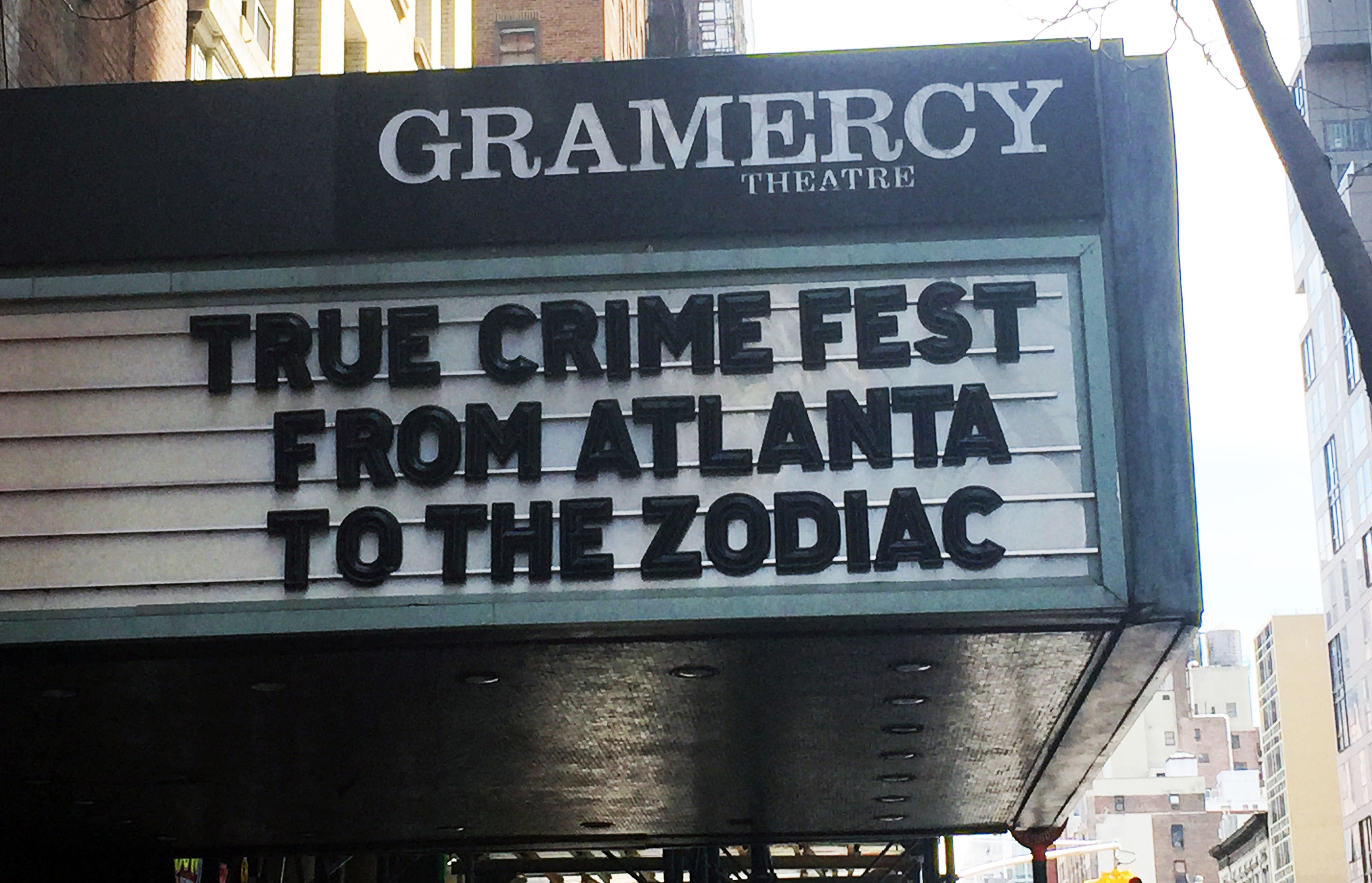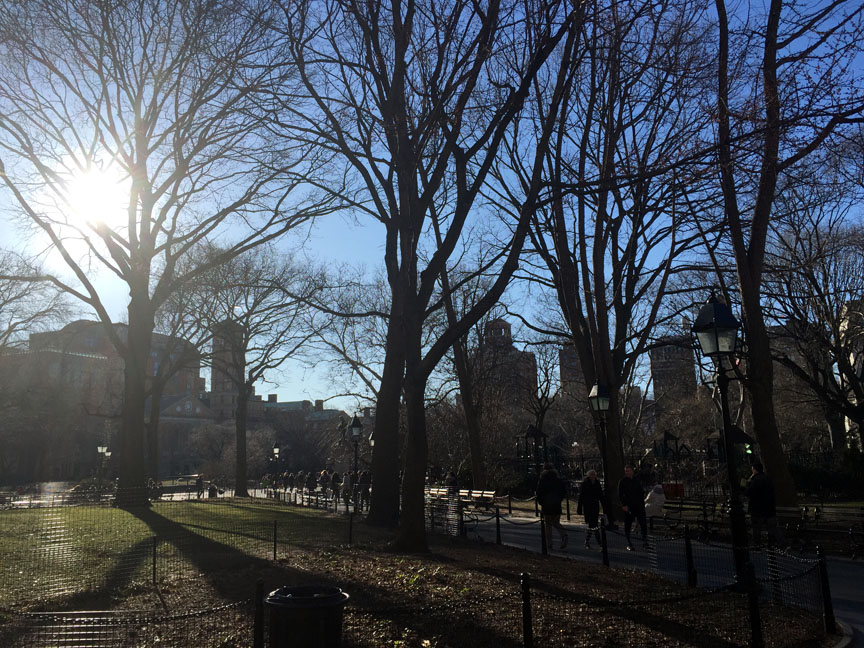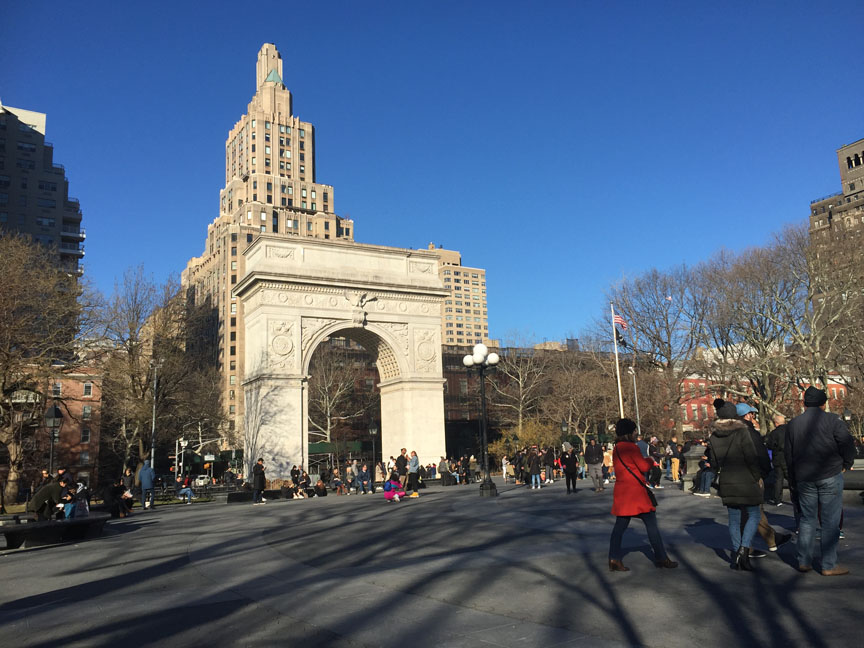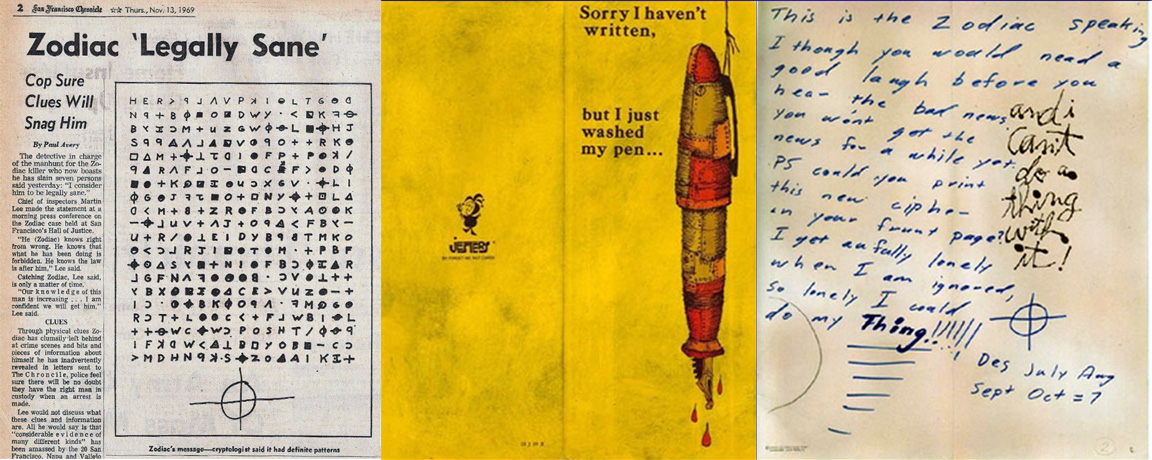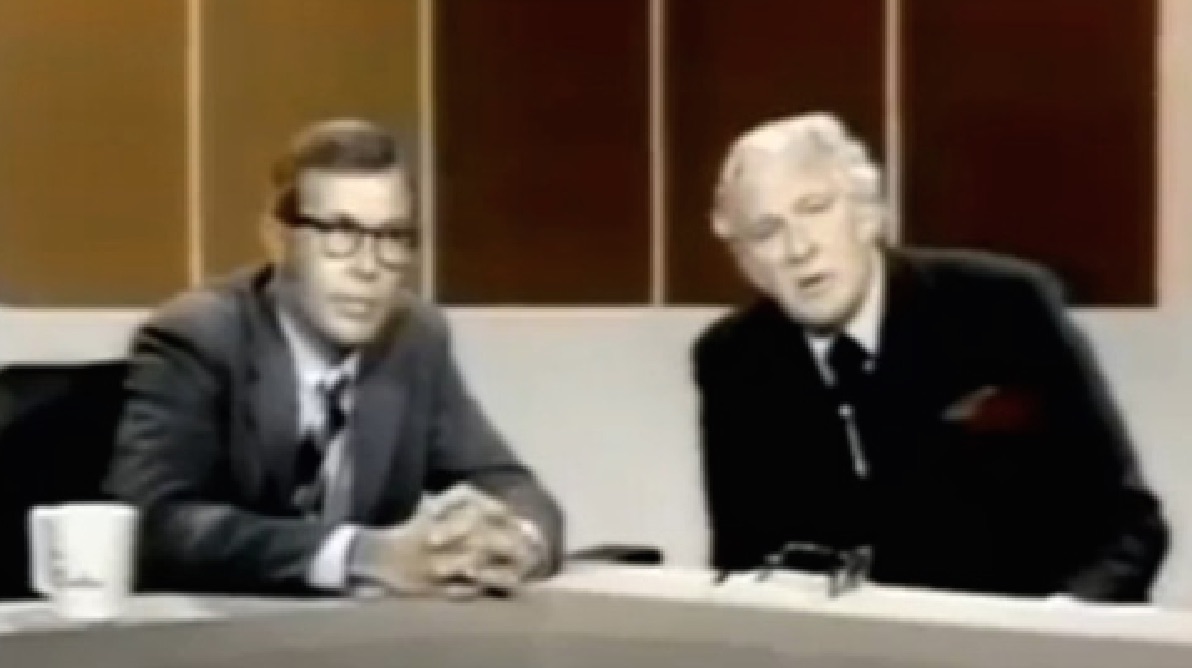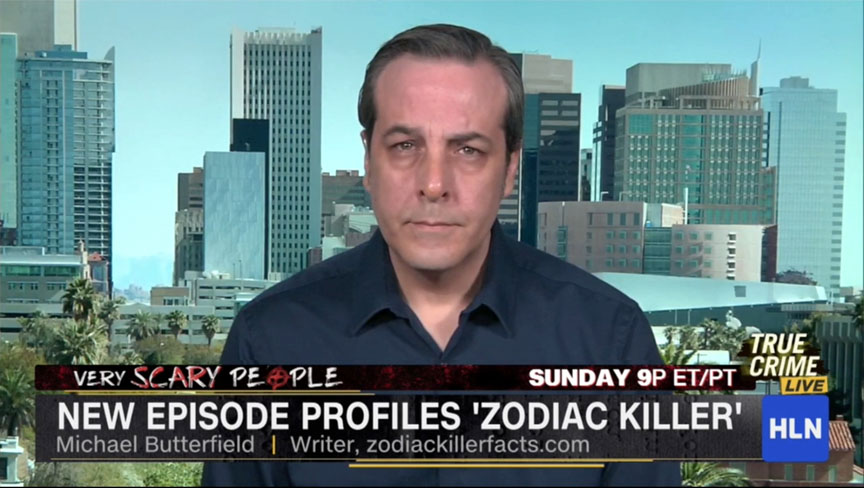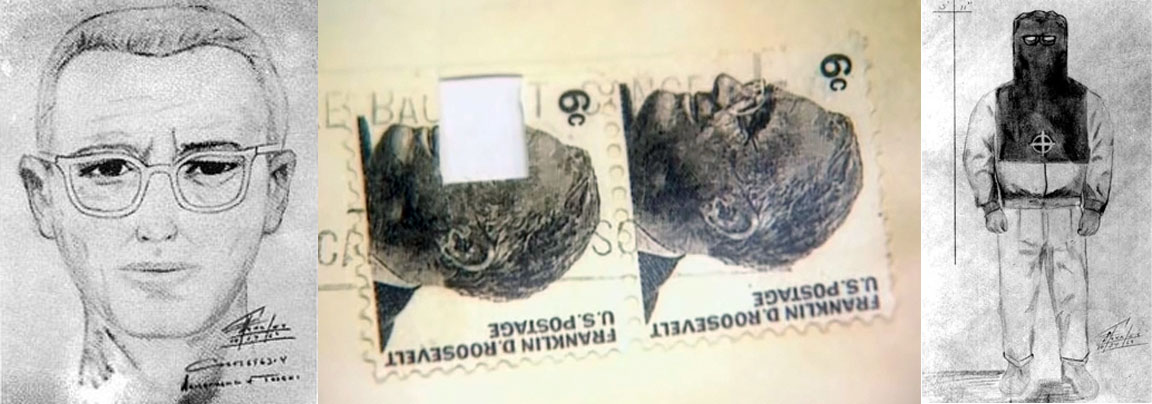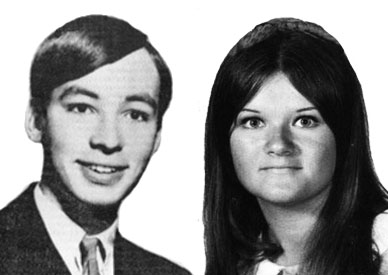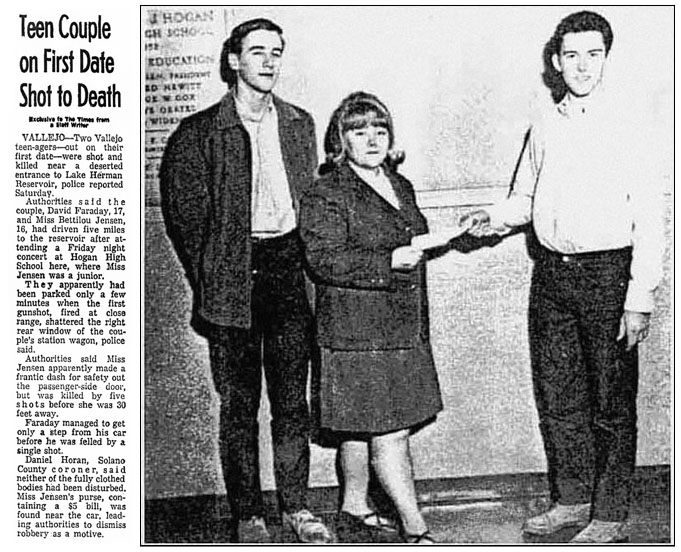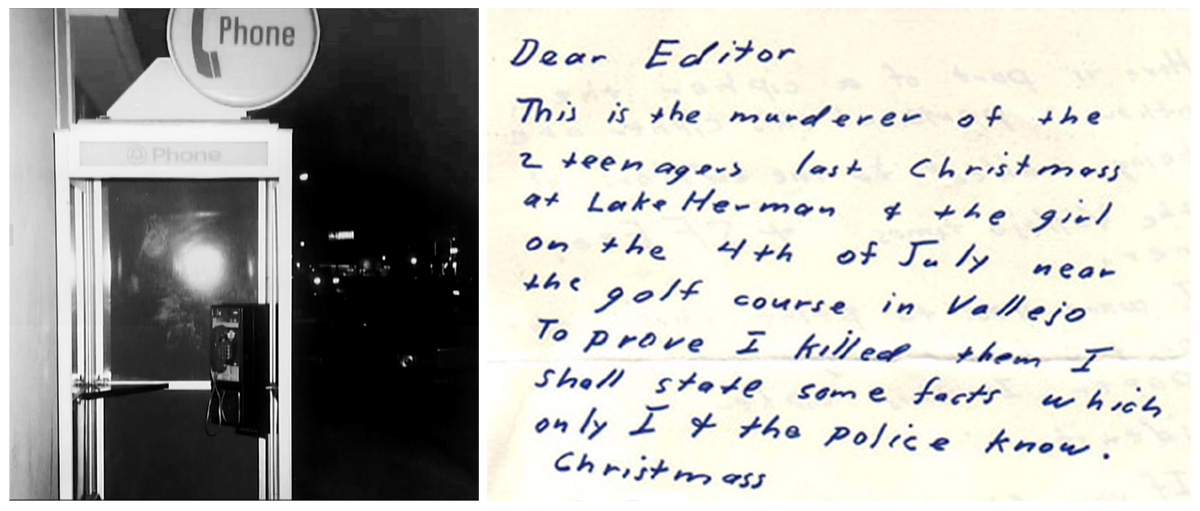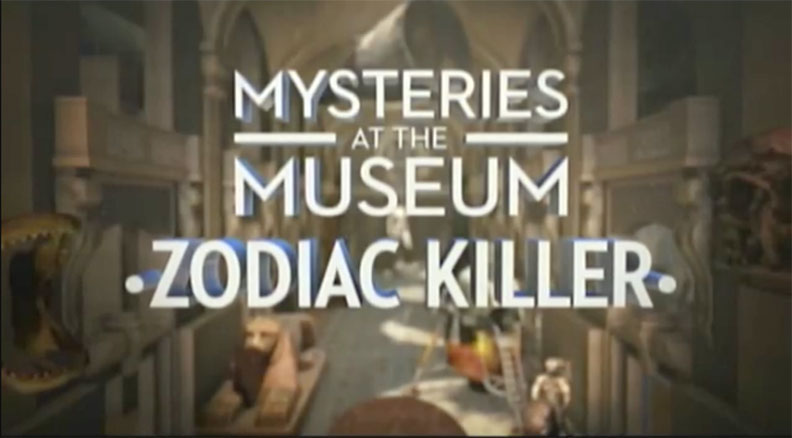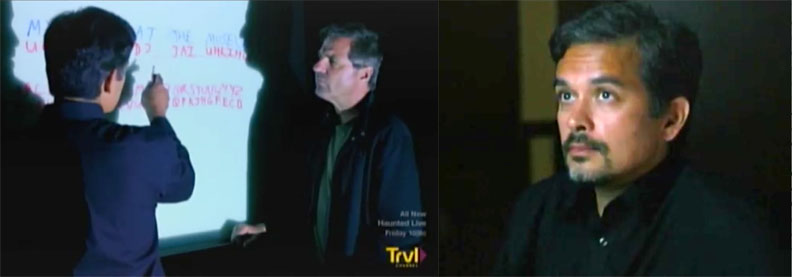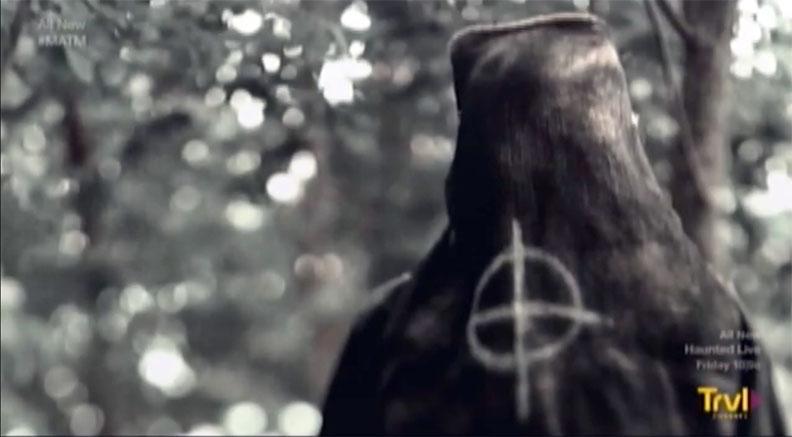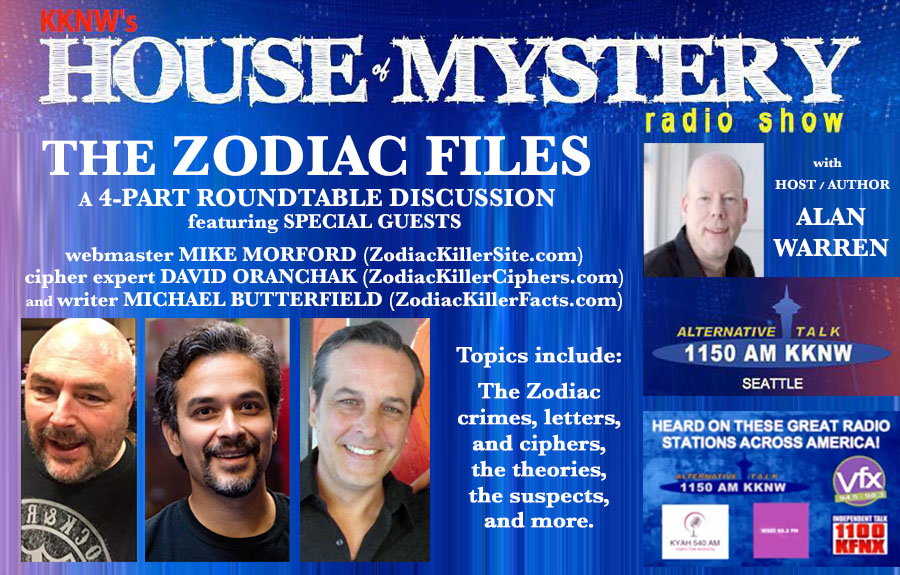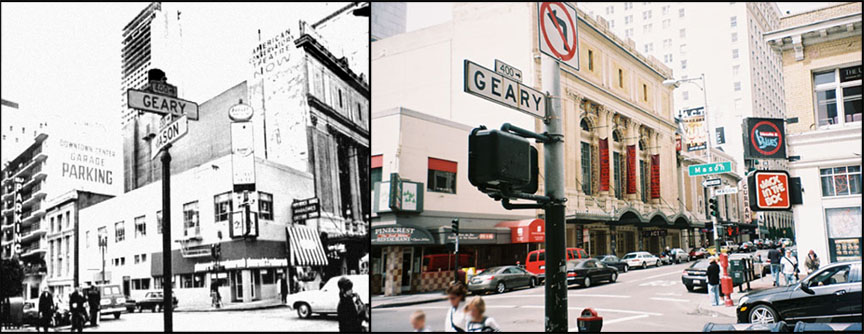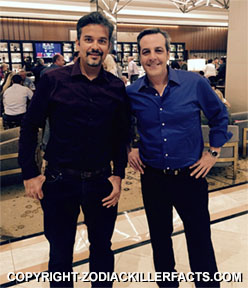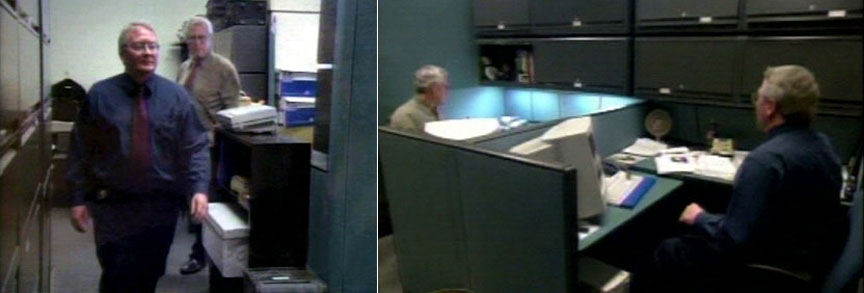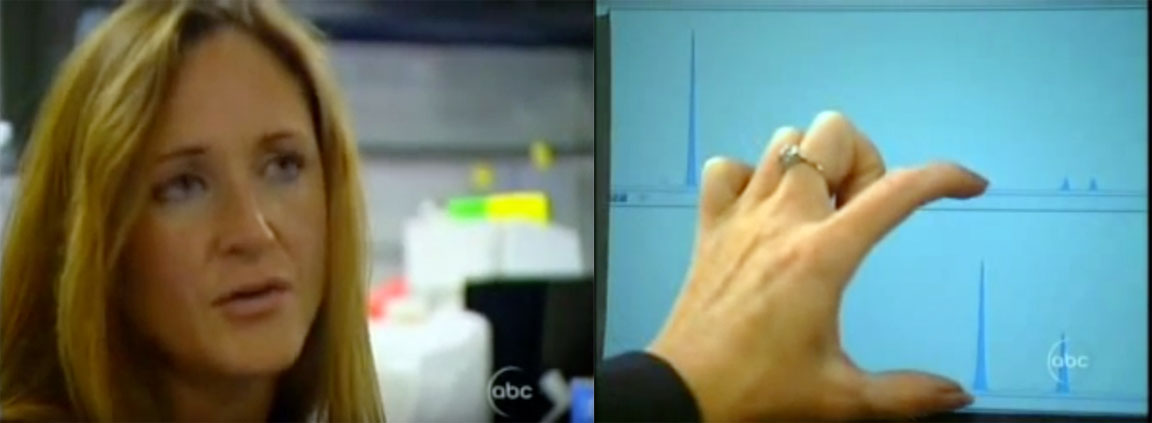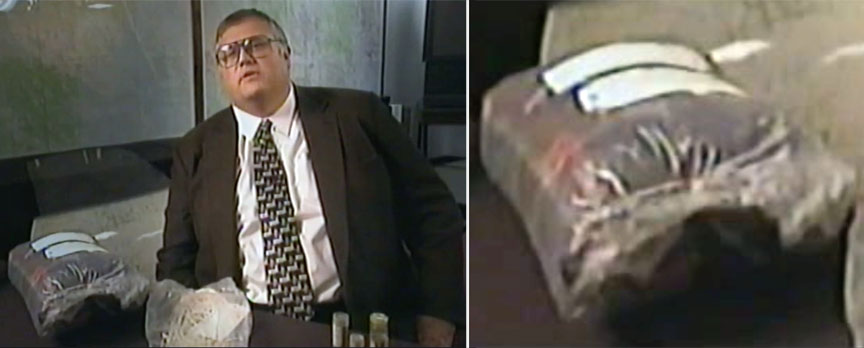[A Note to the Reader: Like many of you, I have been focused on many other priorities during the Covid crisis, and I haven’t had as much time as I’d like to work on this website. I recently began the process of updating various pages and adding links, and I noticed some unpublished posts which had been written before the crisis began, including this article about my trip to New York City for a live episode of the Monster podcast at the “Death Becomes US” true crime festival.]
* * *
The final episode of the true crime podcast MONSTER: The Zodiac Killer titled “Legacy” looks at the issues surrounding the public tragedy of this unsolved mystery. As the Zodiac story ended its fifth decade without answers, the families of the victims live with grief and the search for the killer continues. Efforts to obtain DNA from stamps and envelopes sent with suspected “Zodiac” communications raise hopes that new technology and forensic genealogy could finally close the case even if the families of the victims may never find the mythical solace often described as “closure.”
Every true crime murder story begins with the death of a human being, and the victims are forever trapped in the foundation of the narrative. For the families and loved ones, this second tragedy compounds and amplifies the first horror. The final episode of Monster examined the cold realities of unsolved murders and our collective need to confront the violence in modern society. The growing public fascination with true crime stories creates questions about the impact on victims and the need for standards in media with the increased demand for content.
The human element of true crime entertainment was a central theme at the recent “Death Becomes Us” true crime festival in New York City. The 5-day event offered much more than entertainment and featured informative presentations, panel discussions, live podcasts, and Q&A sessions with true crime investigators, experts, writers, and others. Several true crime cases were examined, including the Zodiac mystery, the Atlanta child murders, the West Memphis Three case and the killings in “Robin Hood Hills,” the saga of “the Golden State Killer,” and more.
On March 24th, 2019, I was part of a panel assembled for a live bonus episode titled MONSTER: From Atlanta to the Zodiac, with producer/narrator Matt Frederick, producer/host Payne Lindsey, executive producer Donald Albright, and producer Meredith Stedman. The first segment focused on Zodiac while the second examined the Atlanta child murders.
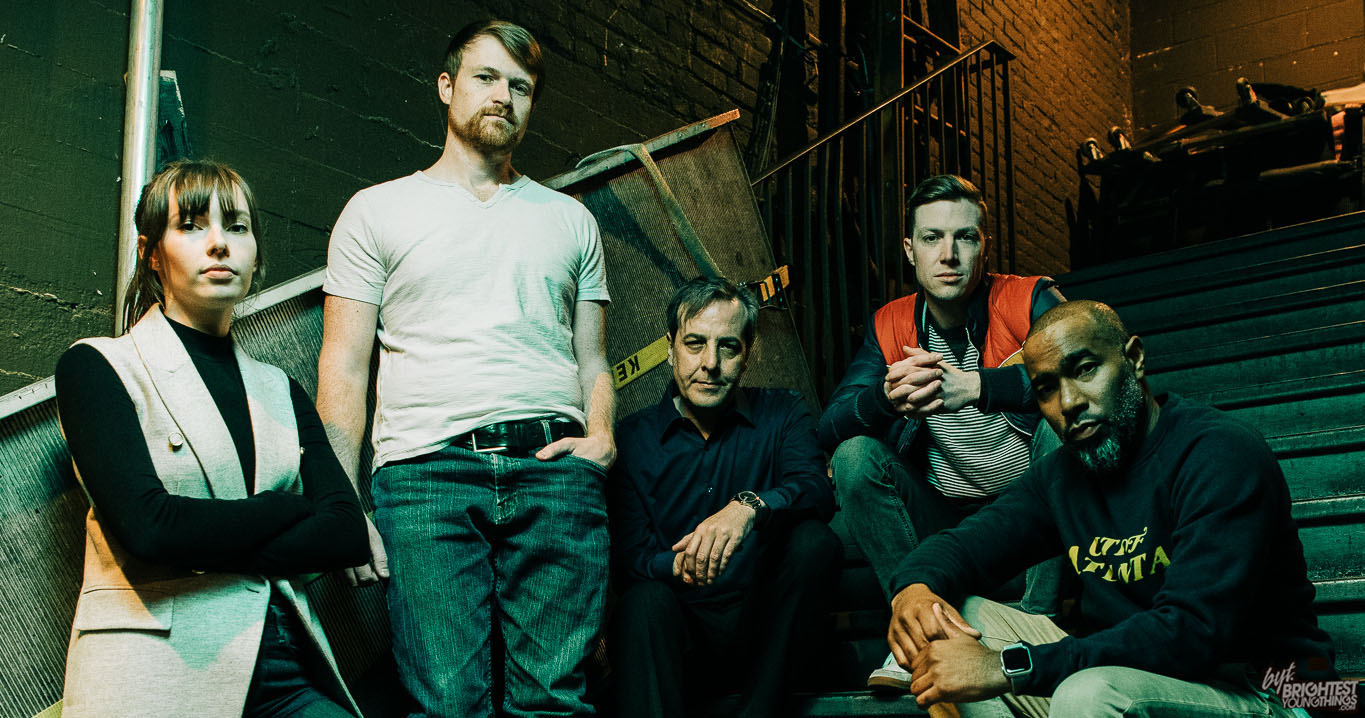
The MONSTER crew: Creative producer Meredith Stedman, producer/narrator Matt Frederick (iHeartMedia), Michael Butterfield (ZodiacKillerFacts.com), executive producer/host Payne Lindsey, and executive producer and co-founder of Tenderfoot TV Donald Albright. Photo by Nicholas Karlin, Karlin Villondo Photography.
A Q&A session included some interesting questions from the audience about the reasons why the murders of victims deemed less important often remain unsolved. Donald Albright replied, “I think I can give you a nice, simple answer– We have to care about those who don’t look like us.” Referring to the victims in the Atlanta child murders case, Albright explained, “They were forgettable victims to the eyes of law enforcement… referred to as ‘street thugs,’ ‘hustlers’.” I also noted that the same problem plagued other infamous serial killer investigations, including the cases of the ‘Green River killer,’ Jeffrey Dahmer, and John Wayne Gacy. Meredith Stedman hoped that true crime podcasts could bring attention to forgotten or neglected cases. “I think that’s where podcasts shine, actually, in a lot of ways,” Meredith said. “Some people just don’t care if the victims are on drugs, or a person of color. It doesn’t make any sense. But we can bring this to our platform, and report on these unreported cases.” One audience member asked if new technology and forensic science would someday put an end to crime. The panel agreed that crime was most likely inevitable, in some form, and Donald Albright provided the best answer when he said, “You can’t underestimate evil.”
The final episode of Monster noted the fact that the Zodiac case remained unsolved on the 50th anniversary despite the growing interest in this true crime story. The crimes, letters, threats and clues of the Zodiac continue to fascinate and haunt, but the killer himself continues to escape justice. Each passing anniversary increases the pressure to solve the case as television documentaries and news stories review the mystery. The public fascination grows and and the Zodiac story spreads by media, but few people stop to think about the politics behind the realities of law enforcement. Investigators can solve crimes with the necessary resources which require funding from taxes paid by the public, but law enforcement budgets are often controlled and allocated by local officials who are elected by the public. Law enforcement agencies are often unable to afford the forensic testing and other services necessary to process evidence, including DNA which could identify the perpetrators and also minimize the other costs incurred investigating and clearing suspects. Those who are interested in true crime and support police efforts to solve cases, identify killers, and find some sense of justice for the victims need to demonstrate that support with their votes for candidates who will work to provide proper funding for law enforcement agencies. During the “Death Becomes Us” Q&A session, I was asked about the issues surrounding the growing interest in true crime stories. “Hopefully, this renewed interest will manifest itself in support for law enforcement to give them the resources they need to solve these cases of sexual assaults, assaults, homicides, because– Wouldn’t it be great if we could make true crime stories obsolete?… There are thousands of back logs of DNA rape kits all over the country, and maybe somewhere in those backlogs is a serial killer, and if they could find that person, they could solve the case, and maybe save someone’s life.” I added, “I hope this isn’t just entertainment– I hope that it becomes social responsibility and awareness.” [Listen to a bonus audio clip: “Monster” Live @ The “Death Becomes Us” true crime festival in New York City.]
The true crime festival was an informative and inspiring event with insights from many diverse individuals, including journalists, investigators, and others involved in true crime stories. Damien Echols and Amanda Knox talked about their murder convictions and releases with FBI profiler John Douglas. Writer Harold Schechter and author Cara Robertson joined author Sarah Weinman for a discussion about true crime stories, including the case of accused ax-murderer Lizzie Borden. The closing show was titled Murder She Wrote: The Ladies of True Crime, with authors Carolyn Murnick, Piper Weiss, and Leah Carroll, moderated by author Sarah Weinman.
The Monster show included a look at the first season of the podcast about the Atlanta child murders in the early 1980s. I appreciated the opportunity to listen as Payne Lindsey, Matt Frederick, and Donald Albright shared their experiences studying the Atlanta case and their own conclusions about the prime suspect Wayne Williams. In 1981, I was 12 years old and worked as a paperboy. I remember preparing the newspapers for delivery and being terrified by stories about the ongoing murders and the search for the killer. My fears became a reality when a young paperboy disappeared in my hometown. Everyone believed that the boy had been abducted and murdered but his body was never found. The reality that a killer was prowling our streets and stalking children was frightening enough, but the unfolding story of the Atlanta killings proved that the monsters were everywhere. I continued to follow the Atlanta case over the years, and I collected documentaries, books, and other material, including the controversial television mini-series produced by the respected producer and writer Abby Mann (Judgment at Nuremberg). I read the essays about the case collected in James Baldwin’s book The Evidence of Things Not Seen, and I also studied the book written by former police officer Chet Dettlinger and writer Jeff Prugh. In The List, Dettlinger and Prugh questioned the evidence, the alleged links between the victims, and the possible guilt or innocence of the prime suspect Wayne Williams. My interest led me to contact Dettlinger to discuss his opinions and conclusions. After years of following this story, I still had some questions and was not convinced that Williams was responsible for all of the murders attributed to the so-called “Atlanta child killer.”
During our off-time that weekend in Manhattan, Matt Frederick and I continued our conversations in the bar at the FreeHand hotel. We discussed the Atlanta murders and the Zodiac saga, exchanged stories about our own journeys exploring both cases, and laughed at some of the more bizarre tales. Matt has a good sense of humor and a unique perspective. He offered insights and raised many interesting questions. As we talked, I noticed a familiar face passing in the background behind Matt– it was John Douglas, the retired FBI agent famous for his work on the Atlanta case as well as his groundbreaking methods and profiles of serial killers (now dramatized in the popular TV series Mindhunter). I pointed to Mr. Douglas and whispered to Matt, “That’s John Douglas (!!).” I did not have the courage to approach Mr. Douglas, but Matt fearlessly called out to the legendary profiler and walked toward him with a hand extended in greeting. Matt introduced us and John Douglas graciously joined our conversation to share his memories of the Atlanta investigation. He noted that his profile of the killer proved controversial when he predicted that, contrary to popular theories, the person responsible for the Atlanta murders was most likely a black man. This prediction proved prophetic when police arrested Wayne Williams, later convicted of two murder of adult males but also linked to the child killings in a trial filled with drama and doubt. Douglas accurately predicted that Williams would expose his violent nature in an angry, emotional outburst in court. In our conversation, Douglas said that he believed Wayne Williams was responsible for some of the crimes, but he also expressed his doubts that Williams was responsible for all of the murders attributed to the Atlanta child killer. “He didn’t do all of them,” Douglas stated. He was optimistic that the reopening of the Atlanta case might provide some new information. We also discussed his work regarding the case of the so-called “West Memphis Three,” including Damien Echols, Jason Baldwin, and Jessie Misskelley. Douglas believed that the three men were not responsible for the murders of three young boys in the early 1990s, and he believed that the step-father of one victim remained a logical suspect. Douglas also shared his thoughts about the explosion of true crime media along with his hopes that the growing interest in true crime stories would generate more support for the investigation of cold cases. I was grateful for the rare opportunity to meet Douglas and to hear his opinions and conclusions in person. This chance meeting was the highlight of the entire event.
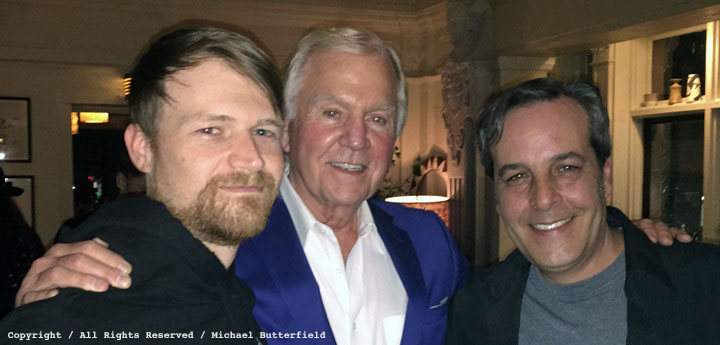
MONSTER producer/narrator Matt Frederick, retired FBI profiler John Douglas, and Michael Butterfield (ZodiacKillerFACTS.com). Photo by John Edward Douglas Jr.
Unfortunately, I arrived in New York too late to see one of the most popular events of the festival. Writer Billy Jensen and retired forensic scientist and cold case investigator Paul Holes talked about the search for and arrest of the suspected “Golden State Killer” Joseph DeAngelo, and the launch of their new podcast The Murder Squad. Paul Holes also discussed investigation strategies and techniques with Jax Miller & Sarah Cailean from the HLN network. In 2009, I was fortunate to spend several days with Paul Holes as we filmed the History Channel series MysteryQuest. Ten years later, at the true crime festival, a problem with an elevator led to my chance reunion with Paul Holes. Very late on my first night in the New York hotel The Freehand, my card key would not activate the elevator, and I was therefore trapped going up and down as other guests climbed aboard and pressed the buttons for their respective floors. I decided to go back down to the lobby and get a new key, but the elevator doors opened to the celebrations on the bar floor and several people stepped inside. Then, I heard someone shouting my name and I looked up to see one of the festival creators smiling and waving at me to come out of the elevator. She grabbed my arm and turned me around to face Paul Holes. We shook hands, and I told Paul that I was one of the many people who were incredibly impressed by his work in helping to identify the Golden State Killer. I also congratulated him on his new book and podcast series, and then joked that he had not aged much in the last ten years while the rest of us were not so lucky.
During the New York trip, I used some of my free time to visit some of my old haunts, including the famous Washington Mews, Washington Square Park, and even my old apartment building in the East Village.
So many memories flashed through my mind as I walked the same streets, so much of my early life was spent in those neighborhoods so many years ago. One of the most vivid memories resurfaced as I walked through Manhattan at night. I moved to New York in the early 1990s, shortly after a serial killer started shooting people there and sending letters claiming to be the Zodiac killer. At first, many people feared that California’s elusive “Zodiac” had returned, but eyewitness descriptions identified the New York killer as a black man while the original Zodiac killer had been described as a white man. I remembered seeing the newspaper headlines reading, “ZODIAC II.” Then, the New York attacks stopped and everyone wondered where the new Zodiac had gone and whether or not he would return. I watched a television news report narrated by John Miller which examined the shootings, the possible suspects, and the killer’s mysterious disappearance. The show was very disturbing, and I remember riding my bike through the streets of New York, knowing that another Zodiac was somewhere out there. Then the New York killer resurfaced and some people wondered if he was just another copycat, a third killer– “ZODIAC III.” One night, comedian George Carlin appeared on a late night TV show and joked about the bizarre situation. “How many Zodiac killers do you need?”
The joke illustrated a problem with the increasing public fascination with the Zodiac mystery and the media coverage. The New York copycat “Zodiac” seemed to have been inspired in-part by the sensational media coverage and the often-glorified image of the Zodiac killer, a situation which raised troubling questions about the standards of journalism and the irresponsible exploitation of true crime stories. Years later, police in Japan found a note in the mouth of a decapitated victim which featured a cross symbol similar to the Zodiac’s infamous crossed-circle symbol. Shortly after the release of the 2007 film Zodiac, a man killed his pregnant girlfriend in a North Carolina hotel room and staged the crime scene to divert suspicion from himself by leaving a “Zodiac” message on the bathroom mirror. The media was not responsible for the acts of lone killers, but all of the copycat killers were somehow inspired and influenced by the media. In 1974, the writer of one suspected “Zodiac” letter complained about the glorification of violence and wrote:
Sirs- I would like to expression my consternt consternation concerning your poor taste + lack of sympathy for the public, as evidenced by your running of the ads for the movie “Badlands,” featuring the blurb: “In 1959 most people were killing time. Kit + Holly were killing people.” In light of recent events, this kind of murder-glorification can only be deplorable at best (not that glorification of violence was ever justifiable) why don’t you show some concern for public sensibilities + cut the ad?
The film Badlands was a fictionalized account of the real-life killing spree by Charles Starkweather. The irony of a murderer who used the media to brag about his crimes criticizing the media for glorifying violence was clear, even if the writer’s complaint was nothing more than sarcastic mockery. The glorification of the Zodiac continues today yet the victims paid the ultimate price for his status as America’s most infamous bogeyman. The Zodiac would undoubtedly lose much of his mystique if he were finally exposed as a seemingly average human being, just as the accused “Golden State killer” Joseph DeAngelo looked like an old man instead of a deadly predator who terrified citizens for decades. The identification of the Zodiac would also end decades of speculation and theories which cloud the true story and fuel sensational coverage.
George Carlin asked, “How many Zodiac killers do you need?” and the answer is none. The Zodiac story remains one of the most compelling and baffling mysteries in American true crime history, but the major reason we are even talking about all of this today comes down to the basic fact that some loser killed a lot of innocent people, bragged about his crimes, and got away with it. San Francisco Chronicle writer Kevin Fagan delivered one of the most memorable lines of the entire Monster podcast series when he said, “Yeah— wacky ciphers and letters that taunt and say, ‘I like hunting the most dangerous game.’ Yeah, great. The guy belongs in freakin’ prison.” When the New York true crime festival ended, I boarded the Long Island Railroad train for the JFK airport and headed back to my everyday life. All the renewed attention, media events, and more were certainly appreciated for attracting attention to this cold case, but none of it would necessary if the case could be solved. I remember wondering if 2019 would be the year that we might finally see the end of this story. After so many years have passed, I have to admit that I never really thought we would still be talking about this case being unsolved. A decades-old mystery may still be fascinating but the Zodiac case is also a dark and depressing chapter of history which deserves a final resolution.
* * *
CLICK HERE to view photos from the “Death Becomes Us” true crime festival in New York, featuring FBI profiler John Douglas, ‘Golden State Killer’ investigator Paul Holes and writer Billy Jensen (The Murder Squad), MONSTER executive producer Payne Lindsey, producer/narrator Matt Frederick, creative producer Meredith Stedman, executive producer and co-founder of Tenderfoot TV Donald Albright, writer Michael Butterfield (ZodiacKillerFacts.com], true crime historian and author Harold Schechter, Cara Robertson (author of The Trial of Lizzie Borden), Carolyn Murnick (author of The Hot One), Piper Weiss (author of You All Grow Up And Leave Me), Leah Carroll (author of Down City), Sarah Weinman (author of The Real Lolita), author Damien Echols (‘The West Memphis Three’), Amanda Knox, Jax Miller & Sarah Cailean (HLN), Martinis & Murder hosts John Thrasher and Daryn Carp, Wine & Crime podcast hosts Amanda, Kenyon, and Lucy.


